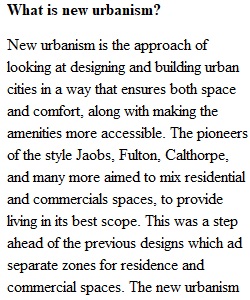


Q What is new urbanism? What three characteristics make an urban social movement particularly “urban”? Use two examples of urban social movements from the chapter to illustrate the ways in which urban social movements are embedded in their cities. What is neoliberal policy, and what are its impacts?
View Related Questions